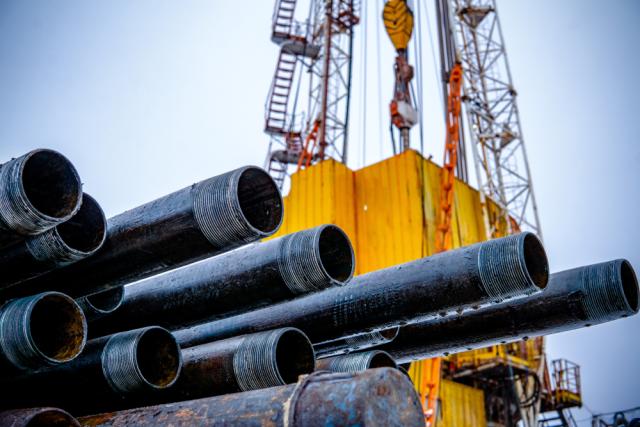
Peak Completion Technologies Inc. created the Killshot tool as a large-bore, single-trip tool that can kill a well prior to placing electrical submersible pumps (ESP) and can prevent an ESP from falling out of reach should it accidentally come loose during its service life or removal. (Source: Shutterstock)
The engineers at Peak Completion Technologies Inc. created the Killshot tool as a bespoke solution to kill wells without heavy fluids and catch loosened downhole pumps.
Designed as a large-bore, single-trip tool, it can kill a well prior to placing electrical submersible pumps (ESP) and can prevent an ESP from falling out of reach should it accidentally come loose during its service life or removal.
ESPs don’t typically fall, but when they do, retrieving them can be costly and time-consuming.
Combining the two functions in a large-bore tool saves time and money against ever-rising completion costs, said Sloane Muscroft, vice president of engineering for Peak.
Killshot eliminates the need for a fluid kill while placing the ESP. Fluid kills are costly and difficult to remove. The tool combines the isolation plug insertion trip with the ESP catch tool trip, saving time and money in the process. And the large bore allows for almost completely free production flow once the isolation plug is pumped out or ruptured, depending on what type of plug a completion team uses.
The Killshot’s pedigree
The Killshot descends from two previous frac products. The first one was the Set-a-Seat frac baffle, designed to replace composite plugs. Developed many years ago, “the idea was that you could set it, drop a frac ball into it and frac against it,” Muscroft said. Composite balls need to be cleaned up while dissolvable frac balls generally required no cleanup, saving the cost of a second downhole trip.
With the advent of current composite plugs, the Set-a-Seat became less necessary, although Muscroft said Peak continued to sell some, mostly in international markets.
Set-a-Stop was the next step, created at customer request as just an ESP catcher, without the sealing function “in case their tubing breaks” during ESP placement or retrieval, he said.
“Operators already do that, but they generally do it with a tubing anchor or a double grip arrow set.”
The problem with those is they have a smaller bore, about half the bore of the casing. The smaller bore can restrict oil flow, and the tools can corrode or become clogged with sand or other downhole debris, requiring a cleanout or fishing trip to remove the hardware. The second tool was similar to the first, with the isolation function removed.
Set-a-Stop was also intended as a one-off solution, but its usefulness started a new product line for Peak, Muscroft said.
One tool catches ESPs, replaces fluid kills
Killing a well with heavy fluid is costly and time-consuming to undo, requiring a separate downhole service trip, he said. Customers “wanted the sealing ability, and they wanted the ability to plug off the production zones of the well for wells that were coming in or that might create concerns about gas pockets, or other issues could happen while they were installing the ESP,” he said.
To meet well control requirements, Peak added a sealing element, bi-directional load-carrying capabilities and a pressure retaining mechanism. The latter is removed once the ESP is installed. Developers based the element and the opposing slips on the Set-a-Seat design.
Installing the ESP—which can be 30 ft or longer and includes power cables, control lines and other equipment—while doing a fluid kill can be complicated, Muscroft said.
“What the Killshot allows them to do is to not worry about kill fluids or plugs. They can run a simple wireline lubricator setup, if they’re concerned about well control, just to get the Killshot in place. Once the Killshot’s on depth, they can pull that all off and insert the ESP, generally speaking, without the same concerns that they would have if they didn’t have the Killshot in place.”
Reception and future
Muscroft said clients have especially appreciated the fact that the Killshot saves “time and money associated with fluid swaps at the end of the completion, prior to putting the well on production. This also eliminates the risk of decreased flow” associated with a fluid kill, which allows operators to maximize flow from the start of production. It also allows for nearly unrestricted fluid flow during the production phase.
“Looking forward,” Muscroft said, “we see additional potential for this tool to be used in other completions, including frac-protect type operations as well as scab-liner applications in production casing.”
Recommended Reading
President: Financial Debt for Mexico's Pemex Totaled $106.8B End of 2023
2024-02-21 - President Andres Manuel Lopez Obrador revealed the debt data in a chart from a presentation on Pemex at a government press conference.
Hess Corp. Boosts Bakken Output, Drilling Ahead of Chevron Merger
2024-01-31 - Hess Corp. increased its drilling activity and output from the Bakken play of North Dakota during the fourth quarter, the E&P reported in its latest earnings.
The OGInterview: Petrie Partners a Big Deal Among Investment Banks
2024-02-01 - In this OGInterview, Hart Energy's Chris Mathews sat down with Petrie Partners—perhaps not the biggest or flashiest investment bank around, but after over two decades, the firm has been around the block more than most.
Petrie Partners: A Small Wonder
2024-02-01 - Petrie Partners may not be the biggest or flashiest investment bank on the block, but after over two decades, its executives have been around the block more than most.
From Restructuring to Reinvention, Weatherford Upbeat on Upcycle
2024-02-11 - Weatherford CEO Girish Saligram charts course for growth as the company looks to enter the third year of what appears to be a long upcycle.




